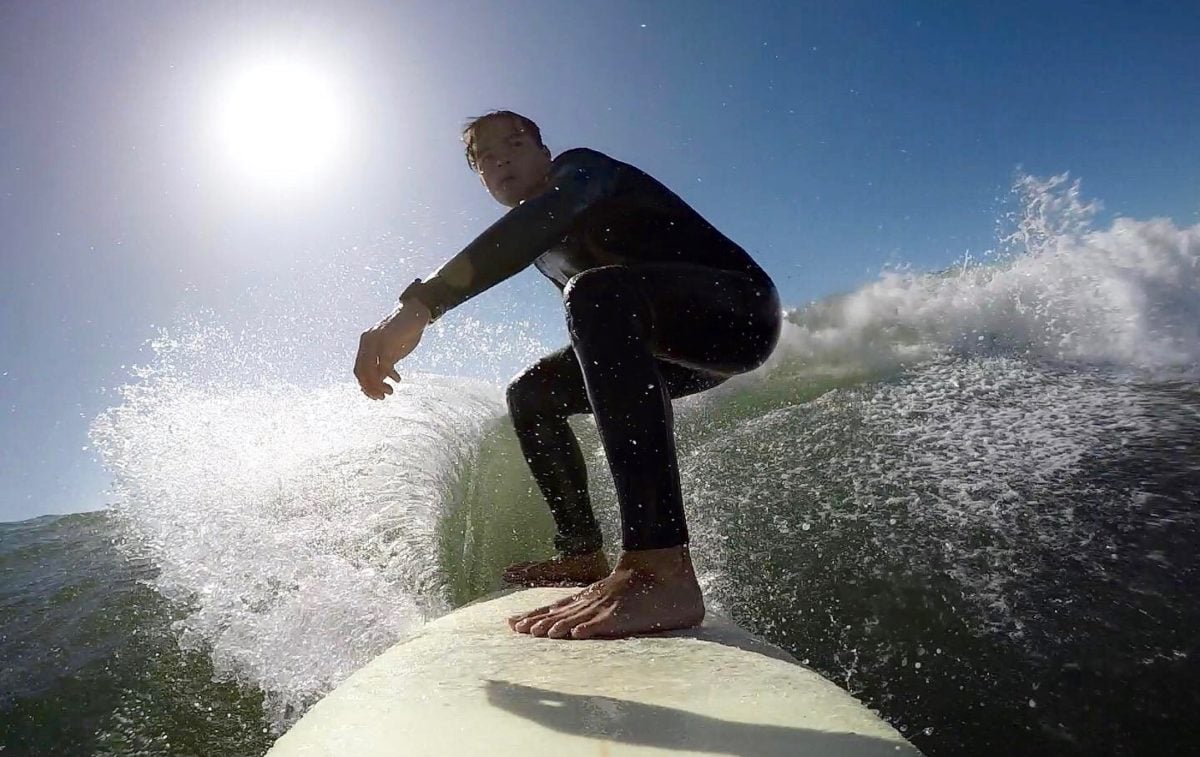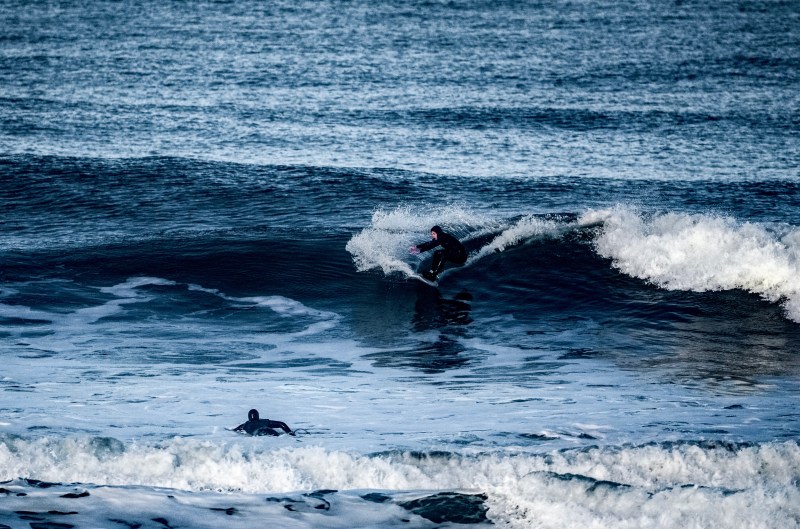With over 2.2 million confirmed cases and 150,000 deaths worldwide, COVID-19 has changed the world we live in, and it’s hard to predict what the situation will be next week — much less, next month. I think we are all anxious to get out of quarantine and return to daily life. And as the son of a trauma surgeon who works in a hospital and has a higher risk of exposure, I am more than ready to get back to normal.
During the school year, I go through the trouble of waking up before 5 a.m. so I can be in the ice-cold water before the sun is up to surf for a few hours before class. While some beaches in Florida have reopened, those in my area are still closed, which means I won’t be able to return to the surf in the near future. While I’m eager to get back, I’ll still be cautious of going out.
With beaches being shut down all around the world, you may have seen surfers on the news in Southern California being arrested for going into the water, surfers protesting quarantine or pro surfers in Costa Rica getting shot at by police. While shooting at an unarmed surfer is overkill (the cop is facing legal troubles for this), is shutting beaches down for surfing reasonable? Or should surfing be allowed? In my opinion, although it’s challenging, if you can surf responsibly, you should be allowed to surf.
The CDC recommends social distancing to limit the spread of the COVID-19, and to me, the ideal surf session already follows all of the social-distancing guidelines. Surfing itself is a pretty selfish sport. I don’t want anybody within six feet of myself, a short board’s length away, and I don’t want large groups around me. The fewer people around me, the more waves I can get. If you can follow these proper social guidelines, there shouldn’t be a problem with going out and surfing and having a good time to relieve stress. The question at hand is whether or not surfers should be allowed to surf during these times, and the answer truly depends on a person-by-person basis and whether proper social-distancing guidelines can be followed.

I believe the vast majority of the surfing community is taking proactive steps to encourage social distancing. The World Surf League (WSL) is postponing or canceling all events through May and has an ongoing #HomeBreakChallenge, encouraging people to stay home. Surfline and other major forecasting websites have issued statements encouraging social distancing and promoting healthy activity at home.
The issue lies in that there are many places where these guidelines cannot be followed. In surfing, there are a few different types of wave breaks, but based on how incoming swells interact with the seafloor to form a rideable wave, they can be mostly broken into two categories: beach breaks and point or reef breaks. Beach breaks are created when the incoming swells interact with the sandbar at the bottom, and usually, there are multiple peaks, or places the wave breaks, along a long stretch of beach. Point or reef breaks are created when the incoming swells interact with immovable objects, such as rocks or reefs, and there is usually one main peak for these types of breaks. At point breaks, such as Rincon and Malibu, the wave can be seen consistently breaking in the same spot every time whereas beach breaks, such as Ocean Beach (SF), the waves are breaking all over the place. If you can find a peak at one of these beaches and surf solo or make sure you’re far enough from the next person, you’re being responsible. However, although some surfers are arguing the contrary, at point breaks, it would be almost impossible to follow proper social-distancing guidelines (when 200 people are in the same 100 square yards). This doesn’t even include all the interactions with others that normally take place before and after surfing in the parking lot.
Ultimately, we have to be honest with ourselves: If we could be safe and follow social-distancing guidelines, even if that means going to worse surf spots, then we could be able to surf and be able to reopen other surf sports. Ultimately, if surfing is allowed where you are and you are also able to follow proper social-distancing guidelines, go have fun. Otherwise, we have to do what we can to stay safe and protect others.
To an outside perspective, it might seem peculiar that surfers are risking exposing themselves or others or risking getting fined or arrested to score some waves, but I understand why they are doing it. I don’t think there are similar equivalents in other sports to what a surfer will do to score quality waves. There is just an inherent addictiveness to surfing that is difficult to replace. With other sports, you have a fair amount of control deciding when you can do them (anywhere there’s a hoop available, you can play basketball). No two waves are the same, though, so the only strategy to get the best wave is to catch as many as you can when the opportunities present themselves.
There are so many risks inherent in the sport of surfing, so I understand why to some surfers, adding the risk of COVID-19 seems trivial in the pursuit of catching the best waves. What people in general — not just surfers — need to understand is that while some of us are willing to take the risk of exposure to do the thing we love, others are not, and we can’t make that life-threatening decision for them. The sooner we act responsibly, the sooner we can get through this.
Contact Roberto Lama at rlama22 ‘at’ stanford.edu.
